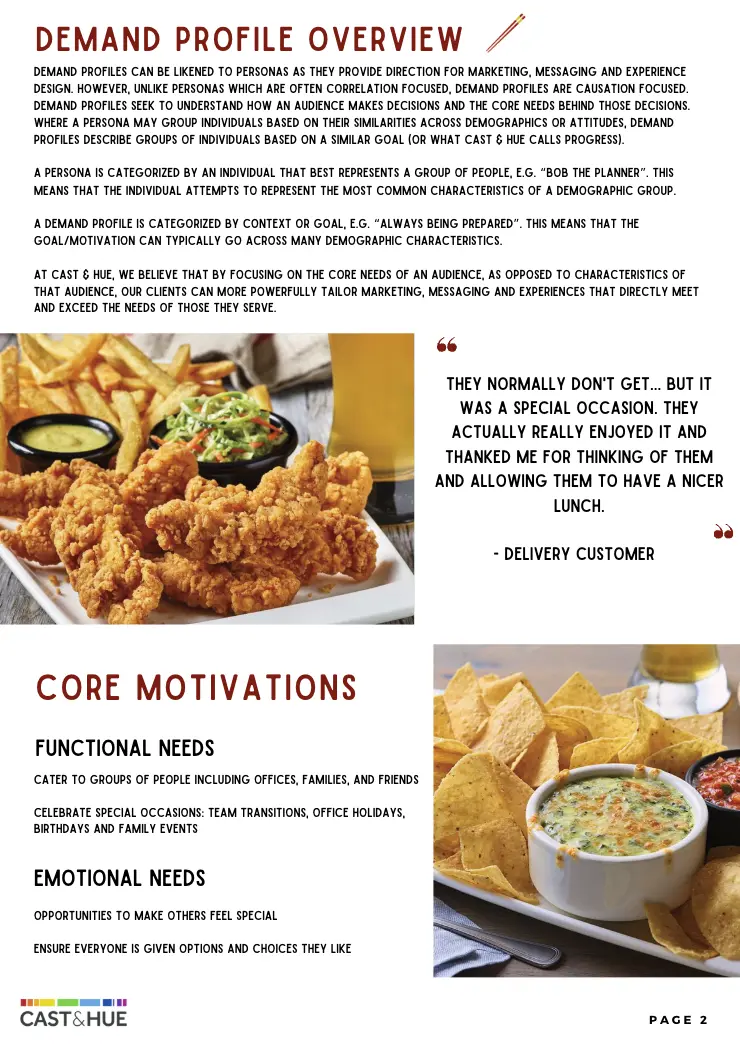Many innovation initiatives fail because they focus on the wrong idea. Jobs-to-be-Done helps teams identify the best opportunities for innovation and build solutions that resonate.
When innovation starts with an idea
When teams come together to build something new, the question is often, “What can we create next?”
Seemingly, the sky is the limit. Anything remotely realistic is on the table. Together, they extract their ideas, narrow down the best options, and run pilots.
Eventually, they launch the new solution with great anticipation. The response is underwhelming — customers are uninterested. They’ve just invested months (and not-insignificant capital) into creating something the market doesn’t want.
This scenario plays out over and over. This often gets chalked up as an unavoidable risk of innovation. But that’s not necessarily true.
The problem with idea-driven innovation
The scenario above was destined to fail because it started off on the wrong foot. “What can we create next?” gets teams focused on what’s feasible in the realm of their constrained thinking.
Consequently, “innovation” often takes the form of an upgrade to something that already exists, like a product feature, or a slightly different way of doing something. But that’s not innovation. It’s just change.
If I had asked people what they wanted, they would have said faster horses.
- Henry Ford
What true innovation looks like
Genuine innovation is something truly new and exciting, like:
- A product your customers would have never thought to ask for (like the car)
- An experience that doesn’t only work around barriers, but removes them (think of how Uber erased the problem of finding parking)
- Ideas that are a few steps ahead of what’s possible (and may even require technology to catch up)
But how can you tap into those kinds of novel solutions, especially in markets where it can feel like there are few left? By starting with a different question: “How can we better meet our customers’ needs?”
Effective innovation starts with empathy
When innovation begins with ideation, it can lead to building solutions that people don’t actually want. It also limits the realm of possibility to the feasible next step, instead of looking ahead of the curve.
Jobs-to-be-Done offers a more effective framework for innovation. It uncovers the “job” people hire your solution for — or the specific type of progress they’re looking to make in their lives.
For example…
The greatest opportunities for innovation exist in the gap between what a person is trying to accomplish (the job) and the limitations of the current solutions. True innovation satisfies unmet needs. But first, you need to find them — that’s where Jobs-to-be-Done comes in.
New to the Jobs framework? Read this guide →
Let Jobs-to-be-Done drive innovation
No matter the job or the solutions available, there will always be barriers in between the person and the progress they want to make.
It could be that they need to:
- Leave the house for that coffee
- Make it themselves at home
- Sift through coffee shops on an app and pay an ever-increasing delivery fee
By understanding those barriers — the needs that are going unmet — we can find ways to do things better.
Where are people compromising? Where are they frustrated? Use these insights as a roadmap for empathy-led innovation.
Why Jobs is the right framework for innovation
The traditional approach to innovation — starting with an idea, product, or technology — is the riskiest path. Jobs-to-be-Done is the more effective innovation framework because it anchors innovation in real human needs.
It helps you innovate in the right direction
Jobs-to-be-Done de-risks innovation. By starting with the job, you solve the right problems and avoid investing into the wrong ideas.
What’s unique about Jobs-to-be-Done is its focus on progress (a customer’s ongoing and longer-term needs). Grounding innovation in progress prevents you from hyperfocusing on desires (what customers want in the moment, which are bound to evolve).
This longer-term lens leads teams to forward-looking, industry-shifting solutions, rather than simple product updates or small changes.
It flips the perspective from inside-out to outside-in
Instead of starting with a cool idea or something you already know is possible, Jobs-to-be-Done pushes teams to think outside the box (or boardroom).
Innovation that’s focused on the business or product limits imagination, often yielding small upgrades or unwanted solutions.
But innovation that’s driven by human needs uncovers new ways to fundamentally improve the solution.
It helps you target customers more effectively
Typically, customers are segmented by factors like age, income, or role. But people in the same age group or income bracket don’t always have the same needs, which means the same messaging won’t always resonate with the whole group.
Segmenting customers based on need is a better way to understand your customer base. By knowing the jobs people hire your solution for (and what sets those segments apart), you’ll have a leg up when launching and marketing the innovation.
Those needs-based personas are called demand profiles. See an example:

Innovation doesn’t have to be risky
Too many innovation initiatives end with underwhelming results, because they started from the inside-out. Jobs-to-be-Done offers a better path forward.
We help teams deeply understand their customers’ needs through the Jobs framework, and find the best ways to use those insights.




.png)
.webp)


.png)